 Last additions - Kyoto city 京都市 Last additions - Kyoto city 京都市 |
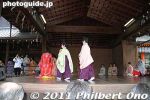
Jan 06, 2011
|
|
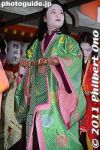
Jan 06, 2011
|
|
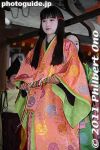
Jan 06, 2011
|
|
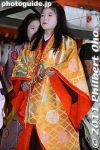
Jan 06, 2011
|
|
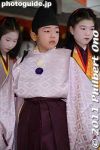
Jan 06, 2011
|
|
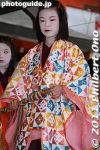
Jan 06, 2011
|
|
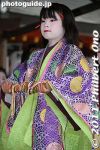
Jan 06, 2011
|
|
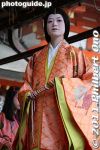
Jan 06, 2011
|
|
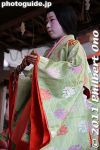
Jan 06, 2011
|
|
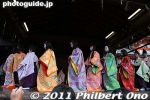
Jan 06, 2011
|
|
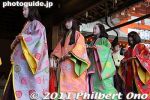
Jan 06, 2011
|
|
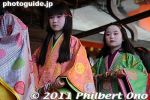
Jan 06, 2011
|
|
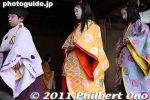
Jan 06, 2011
|
|
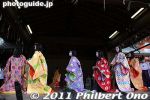
Jan 06, 2011
|
|
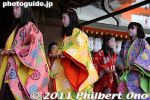
Jan 06, 2011
|
|
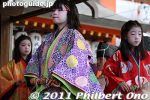
Jan 06, 2011
|
|
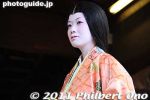
Jan 06, 2011
|
|
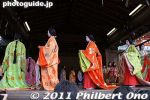
Jan 06, 2011
|
|
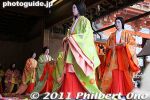
Jan 06, 2011
|
|
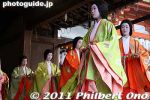
Jan 06, 2011
|
|
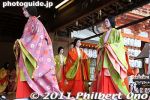
Jan 06, 2011
|
|
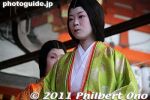
Jan 06, 2011
|
|
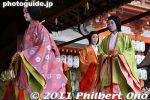
Jan 06, 2011
|
|
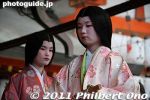
Jan 06, 2011
|
|
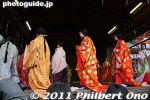
Jan 06, 2011
|
|
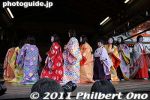
In the end, they all got up and walked around in a circle on the stage. This was a great photo op.Jan 06, 2011
|
|
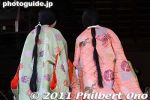
Jan 06, 2011
|
|
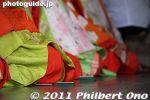
You can see their card winnings. The person who got the most cards wins.Jan 06, 2011
|
|
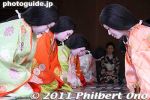
Jan 06, 2011
|
|
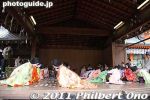
Karuta Hajime on the Noh stage at Yasaka Jinja Shrine, Kyoto on Jan. 3, 2011Jan 06, 2011
|
|
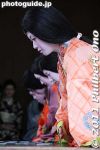
Jan 06, 2011
|
|
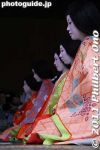
Jan 06, 2011
|
|
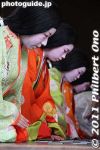
Jan 06, 2011
|
|
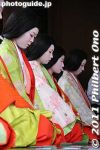
I just love the Heian-Period hair and costumes.Jan 06, 2011
|
|
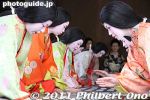
Jan 06, 2011
|
|
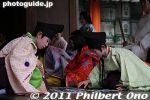
Jan 06, 2011
|
|
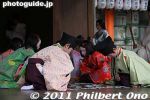
Jan 06, 2011
|
|
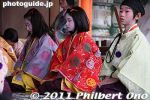
Kids playing karuta at Yasaka Shrine, Kyoto.Jan 06, 2011
|
|
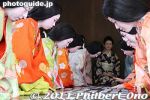
Jan 06, 2011
|
|
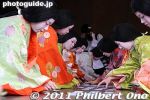
Next was a karuta game by multiple players. One group were these karuta-hime women, and another group were kids.Jan 06, 2011
|
|
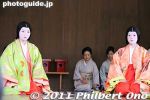
The first match ends.Jan 06, 2011
|
|
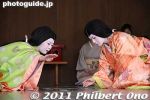
Jan 06, 2011
|
|
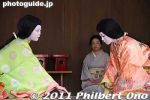
Jan 06, 2011
|
|
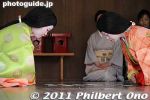
Jan 06, 2011
|
|
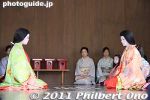
Jan 06, 2011
|
|
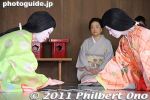
Jan 06, 2011
|
|
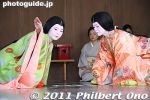
Jan 06, 2011
|
|
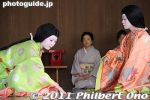
The poem narrator (or singer) would recite the first half of the poem (hyakunin-isshu) and the second half is written on the cards. The players seek to grab the card written with the matching half of the poem.Jan 06, 2011
|
|
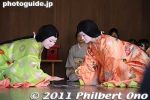
While the poem was read by an elderly woman, one of the two women here would grab or slap out the correct card.Jan 06, 2011
|
|
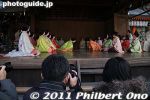
This is how it looks from my 3rd row seat. We were not allowed to stand up.Jan 06, 2011
|
|
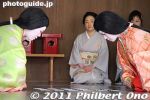
The two karuta-hime face off in their first match of 2011.Jan 06, 2011
|
|
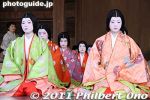
Jan 06, 2011
|
|
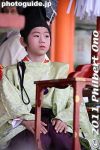
Jan 06, 2011
|
|
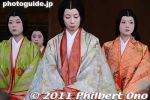
Jan 06, 2011
|
|
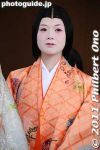
...this karuta-hime will face off for the first match of the 41st Karuta Hajime ceremony at Yasaka Shrine.Jan 06, 2011
|
|
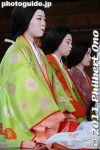
This karuta-hime and...Jan 06, 2011
|
|
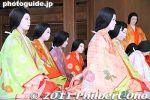
At least a few of them are college students.Jan 06, 2011
|
|
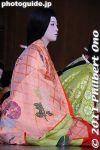
Jan 06, 2011
|
|
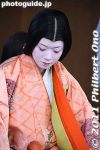
Notice how the hair is parted on the top (a wig).Jan 06, 2011
|
|
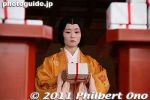
Jan 06, 2011
|
|
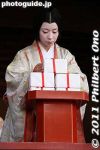
Jan 06, 2011
|
|
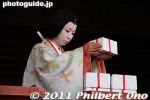
Jan 06, 2011
|
|
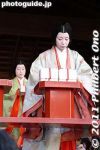
Jan 06, 2011
|
|
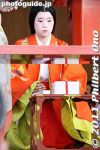
Then a few of the karuta players gave offerings. Jan 06, 2011
|
|
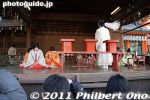
The priest blesses the karuta players as he waves his sacred staff.Jan 06, 2011
|
|
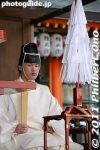
A shrine priest begins the ceremony.Jan 06, 2011
|
|
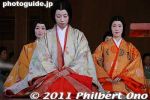
Even while sitting in the 3rd row, I managed to get some decent shots in between the heads (and cameras) of people sitting in front of me.Jan 06, 2011
|
|
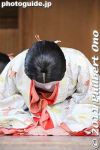
The hair is a wig. Notice how it is parted at the top as she takes a bow.Jan 06, 2011
|
|
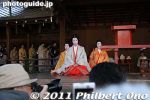
View from the 3rd row. Not good if you're a photographer. People in the front row get the best views, but they must have been there from around 10 am.Jan 06, 2011
|
|
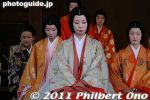
These ladies are called Karuta-hime. かるた姫Jan 06, 2011
|
|
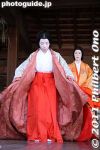
This woman prepares to sit on the floor.Jan 06, 2011
|
|
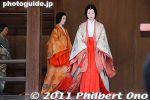
Then the adult women appeared on stage. (No men.) There were twelve of them. The karuta players are from a karuta organization in Kyoto called Nihon Karuta-in Hon-in. 日本かるた院本院Jan 06, 2011
|
|
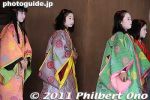
The karuta card players appeared slightly before 1 pm. First the children, all dressed in Heian costume. Jan 06, 2011
|
|
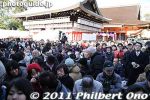
The crowd behind me in front of the Noh stage. I got there at 11:30 am, and luckily found a seat in the 3rd row. The karuta hajime was to start at 1 pm. It was pretty cold waiting for 90 min.Jan 06, 2011
|
|
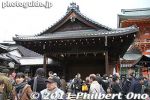
Yasaka Shrine's Noh Stage was where the 41st Karuta Hajime card game ceremony was held on Jan. 3, 2011. There were a good number of wooden benches to sit on, but they filled up quickly by 11:45 am.Jan 06, 2011
|
|
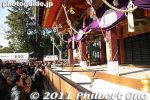
People praying for the new year at Yasaka Shrine. I was here on Jan. 3, 2011 to see the Karuta hajime card game held on this day every year.Jan 06, 2011
|
|
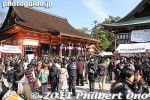
On the left is Yasaka Shrine's Honden or main worship hall. The shrine worships Susanoo-no-Mikoto which also the god of waka poetry.Jan 06, 2011
|
|
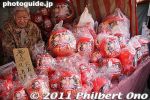
Daruma doll vendor.Jan 06, 2011
|
|
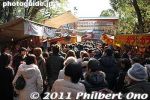
Going to Yasaka Shrine.Jan 06, 2011
|
|
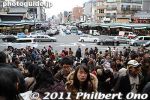
People entering Yasaka Shrine on Jan. 3, 2011. Must've been worse on Jan. 1.Jan 06, 2011
|
|
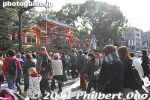
Yasaka Shrine in Kyoto on Jan. 3, 2011. Still hordes of people going to worship for New Year's hatsumode.Jan 06, 2011
|
|
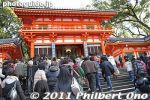
Entering Yasaka Shrine West Romon Gate.Jan 06, 2011
|
|

Numerous shelves of manga for people to read freely.Mar 28, 2010
|
|

Children's room.Mar 28, 2010
|
|

Principal's office.Mar 28, 2010
|
|

Large hinotori phoenix sculpture from Tezuka Osamu.Mar 28, 2010
|
|

The Kyoto International Manga Museum is housed in a former school. This space in front was the playground.Mar 28, 2010
|
|

Mar 28, 2010
|
|

Kyoto International Manga MuseumMar 28, 2010
|
|

There is a cafe on the 1st floor. The walls are autographed by manga artists.Mar 28, 2010
|
|

SanjusangendoMar 28, 2010
|
|

Sanjusangendo. Unfortunately, photography is not allowed inside.Mar 28, 2010
|
|

Sanjusangendo in Kyoto is famous for its numerous Kannon statues.Mar 28, 2010
|
|

Mar 28, 2010
|
|

Mar 28, 2010
|
|
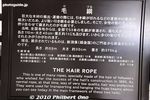
About the hair rope.Mar 28, 2010
|
|

One end of Sanjusangendo Hall.Mar 28, 2010
|
|

Higashi Hongwanji's Amida-do Hall undergoing roof work to be completed in 2011.Mar 28, 2010
|
|

Mar 28, 2010
|
|

My favorite sight at Higashi Hongwanji in Kyoto is these giant ropes made of donated human hair. The ropes were used to reconstruct the temple during dire times.Mar 28, 2010
|
|

Higashi Hongwanji in Kyoto is not included in the World Heritage Site of Kyoto temples.Mar 28, 2010
|
|

Gate of Higashi Hongwanji templeMar 28, 2010
|
|

Ryoanji rock garden. The cherry tree is beautiful when it blooms.Mar 28, 2010
|
|

Rear view of KinkakujiMar 28, 2010
|
|

Ryoanji rock garden.Mar 28, 2010
|
|

Ryoanji has too many tourists to make it a place to meditate in Kyoto.Mar 28, 2010
|
|

Ryoanji temple crowded with people.Mar 28, 2010
|
|

Golden phoenix on the roof of Kinkakuji.Mar 28, 2010
|
|

Mar 28, 2010
|
|

Kinkakuji Gold Pavilion, KyotoMar 28, 2010
|
|

Mar 28, 2010
|
|

Kinkakuji Gold Pavilion 金閣寺Mar 28, 2010
|
|

Kinkakuji is one of the world's most picturesque buildings.Mar 28, 2010
|
|

Path to Kinkakuji Gold Pavilion entrance path in autumn.Mar 28, 2010
|
|

A large crowd gather around the tree when it is in bloom.Mar 28, 2010
|
|

It looks different from different angles.Mar 28, 2010
|
|

Hanami picnickers during cherry blossom season in Maruyama Park.Mar 28, 2010
|
|

Mar 28, 2010
|
|

The famous cherry tree in Maruyama Park in Kyoto.Mar 28, 2010
|
|

Statue of Sakamoto Ryoma in Maruyama Park.Mar 28, 2010
|
|

Sakura in Maruyama Park, Kyoto.Mar 28, 2010
|
|

This rear torii goes to Maruyama Park. Mar 28, 2010
|
|

Directly behind Yasaka Shrine is Maruyama Park which has a few cherry trees. 円山公園Mar 28, 2010
|
|

Mar 28, 2010
|
|

Women dressed as maiko walk around Yasaka Shrine and pose for tourists. (Not real maiko.)Mar 28, 2010
|
|

Yasaka Shrine's Honden Hall.Mar 28, 2010
|
|

Gate to Yasaka Shrine. The shrine also holds the annual Gion Matsuri Festival in July featuring ornate floats paraded around the city.Mar 28, 2010
|
|

Mar 28, 2010
|
|

Yasaka Shrine in Gion district of Kyoto. This is the main shrine patronized by the Gion geisha.Mar 28, 2010
|
|

Yasaka Shrine anchors one end of Kawaramachi.Mar 28, 2010
|
|

Kiyomizu temple with cherry blossoms lit up at night.Mar 28, 2010
|
|

Kiyomizu temple with cherry blossoms lit up at night.Mar 28, 2010
|
|

Kiyomizu temple with cherry blossoms lit up at night.Mar 28, 2010
|
|

Kiyomizu temple with cherry blossoms lit up at night.Mar 28, 2010
|
|

Kobu Kaburenjo TheaterMar 28, 2010
|
|

Kyoto Tower as seen from the open-air roof of Porta shopping mall.Mar 28, 2010
|
|

Geisha in my midst, in a taxi instead of a rickshaw.Mar 28, 2010
|
|

Kyoto Tower at night.Mar 28, 2010
|
|

Ponto-cho alley, enclave of geisha.Mar 28, 2010
|
|

Pokkuri clogs worn by maiko. Very expensive ones going for 51,000 yen per pair.Mar 28, 2010
|
|

It was an interesting and colorful event.Feb 04, 2010
|
|

The ball falls off the roof after it was kicked way too high.Feb 04, 2010
|
|

It's quite hard to get good still shots. I had better luck with video.Feb 04, 2010
|
|

Feb 04, 2010
|
|

The ball sometimes bounce into the crowd.Feb 04, 2010
|
|

Feb 04, 2010
|
|

Feb 04, 2010
|
|

Feb 04, 2010
|
|

Feb 04, 2010
|
|

Feb 04, 2010
|
|

They had a break and the players changed.Feb 04, 2010
|
|

Female kemari player.Feb 04, 2010
|
|

Feb 04, 2010
|
|

Feb 04, 2010
|
|

Shrine priests watching kemari.Feb 04, 2010
|
|

Feb 04, 2010
|
|

Feb 04, 2010
|
|

Feb 04, 2010
|
|

Feb 04, 2010
|
|
|

Feb 04, 2010
|
|

Kemari Hajime at Shimogamo Shrine, KyotoFeb 04, 2010
|
|

Feb 04, 2010
|
|

Kemari Hajime at Shimogamo Shrine, KyotoFeb 04, 2010
|
|

Sometimes the ball went way up, and once it went up on the roof. These players weren't so skilled in my opinion.Feb 04, 2010
|
|

The object of kemari is to keep the ball in the air. And whoever kicks the ball, must make it easy for the next person to kick it. But this is hard to do.Feb 04, 2010
|
|

Feb 04, 2010
|
|

Feb 04, 2010
|
|

The white kemari ball is made of deer skin.Feb 04, 2010
|
|

The game is preceded by a ceremony. Feb 04, 2010
|
|

US President George H.W. Bush, during a visit to Japan in Jan. 1992, tried to play kemari as if it were soccer. That embarrassment was overshadowed by him vomiting on the Prime Minister during a banquet.Feb 04, 2010
|
|

Kemari is held at other shrines at other times of the year.Feb 04, 2010
|
|

But I got a good view from my free seat.Feb 04, 2010
|
|

Besides free seating, they provide paid spectator seating in the two pavilions on the right and left. 2000 yen per seat.Feb 04, 2010
|
|

On Jan. 4, Kemari hajime at Shimogamo Shrine starts at 1:30 pm. Free seating is provided, but getting there early assures you of a better view if you want to take pictures.Feb 04, 2010
|
|

The kemari players include women. Kemari originated in China.Feb 04, 2010
|
|

Feb 04, 2010
|
|

Shimogamo Shrine toriiFeb 04, 2010
|
|
|

Way to Shimogamo Shrine.Feb 04, 2010
|
|

Shimogamo Shrine map.Feb 04, 2010
|
|

Site of Ryukoku Museum across from Nishi Hongwanji.Jan 30, 2010
|
|
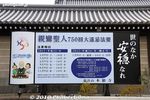
Jan 30, 2010
|
|
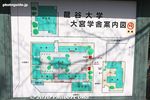
Map of Ryukoku Univ.Jan 30, 2010
|
|

Jan 30, 2010
|
|

Jan 30, 2010
|
|

Jan 30, 2010
|
|

Ryukoku UniversityJan 30, 2010
|
|

Near Karamon Gate is Ryukoku University affiliated with Nishi Hongwanji.Jan 30, 2010
|
|

Jan 30, 2010
|
|

Jan 30, 2010
|
|

Jan 30, 2010
|
|

Carvings on Nishi Hongwanji's Karamon Gate, a National Treasure. 唐門Jan 30, 2010
|
|

Karamon Gate, a National Treasure. 唐門Jan 30, 2010
|
|

Karamon Gate, a National Treasure. 唐門Jan 30, 2010
|
|

Karamon Gate, a National Treasure. 唐門Jan 30, 2010
|
|

Jan 30, 2010
|
|

A short walk from the temple halls is this ornate Karamon Gate, a National Treasure at Nishi Hongwanji, Kyoto. 唐門Jan 30, 2010
|
|

Outside the walls of Nishi Hongwanji.Jan 30, 2010
|
|

Amida-do Hall. 阿弥陀堂(本堂)Jan 30, 2010
|
|

Jan 30, 2010
|
|

Altar inside Amida-do Hall of Nishi Hongwanji, Kyoto. 阿弥陀堂(本堂)Jan 30, 2010
|
|

Altar inside Amida-do Hall, Nishi Hongwanji, Kyoto. Jan 30, 2010
|
|

Inside Amida-do (Hondo) Hall on Jan. 1, 2010. Not as crowded as Shinto shrines on New Year's Day, but there was a crowd inside the temple as a minister preached. 阿弥陀堂(本堂)Jan 30, 2010
|
|

Jan 30, 2010
|
|

Amida-do Hall veranda.Jan 30, 2010
|
|

Jan 30, 2010
|
|

View from corridor.Jan 30, 2010
|
|

Corridor connecting Goeido Hall and Amida-do Hall.Jan 30, 2010
|
|

Goeido Hall Jan 30, 2010
|
|

Goeido Hall Jan 30, 2010
|
|

Altar inside Goeido Hall Jan 30, 2010
|
|

Inside the Goeido Hall. You have to take off your shoes to enter. This was on Jan. 1, 2010. 御影堂Jan 30, 2010
|
|

Altar inside Goeido Hall, Nishi Hongwanji, Kyoto. 御影堂Jan 30, 2010
|
|

Water fountainJan 30, 2010
|
|

Water fountainJan 30, 2010
|
|

Amida-domon Gate Jan 30, 2010
|
|

Kyozo or Scripture Repository. It houses the Daizokyo or the entire collection of Buddhist texts published by Tenkai. There are 6,323 scrolls and books stored in 665 boxes. They were purchased from the Tokugawa government and received in 1648. 経蔵Jan 30, 2010
|
|

Momdo Kaikan Hall is a lodging facility. 聞法会館Jan 30, 2010
|
|

Goeido Hall Jan 30, 2010
|
|

Next to the Amida-do Hall is this modern building housing a gift shop, restaurant, and temple offices. 宗務総合庁舎Jan 30, 2010
|
|

Goeido Hall and Amida-do HallJan 30, 2010
|
|

Roof of Amida-do HallJan 30, 2010
|
|

Amida-do Hall is the main hall or temple, also called the Hondo Hall. 阿弥陀堂(本堂)Jan 30, 2010
|
|

Corridor connecting the Goeido (left) and Amida-do (right) Halls.Jan 30, 2010
|
|

Amida-do Hall is an Important Cultural Property at Nishi Hongwanji, Kyoto. 阿弥陀堂(本堂)Jan 30, 2010
|
|

Amida-do HallJan 30, 2010
|
|

Corridor connecting the Goeido (left) and Amida-do (right) Halls.Jan 30, 2010
|
|

Hiunkaku Pavilion is a National Treasure. Unfortunately, it is not open for public viewing. One of Kyoto's Three Best Pavilions along with Kinkakuji and Ginkakuji Pavilions. 飛雲閣Jan 30, 2010
|
|

Bell tower carvingsJan 30, 2010
|
|

Bell tower at Nishi HongwanjiJan 30, 2010
|
|

Next to the Goeido Founder's Hall is this modern Ryukoden Hall which is like a reception counter for worshippers. 龍虎殿Jan 30, 2010
|
|

Roof of Goeido Founder's HallJan 30, 2010
|
|

Goeido Founder's HallJan 30, 2010
|
|

Side of Goeido Founder's Hall.Jan 30, 2010
|
|

Panoramic view of Nishi Hongwanji temple, Kyoto. The layout of the buildings is almost the same as Higashi Hongwanji.Jan 30, 2010
|
|

New Year observance schedule.Jan 30, 2010
|
|

Goeido Founder's Hall at Nishi Hongwanji, Kyoto. The building is an Important Cultural Property. 御影堂Jan 30, 2010
|
|

Goeido Founder's Hall. For several years, the Nishi Hongwanji buildings were hidden by construction scaffolding as they underwent major renovations. Finally, we get to see all the buildings unobstructed. 御影堂Jan 30, 2010
|
|
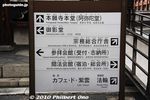
Directional signJan 30, 2010
|
|
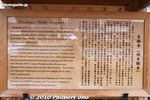
About Nishi Hongwanji in English.Jan 30, 2010
|
|

Large flags outside the temple gates.Jan 30, 2010
|
|

Another main gate is this Amidado-mon Gate which leads to Amida-do Hall. 阿弥陀堂門Jan 30, 2010
|
|

Goeido-mon Gate is one of the main gates to enter Nishi Hongwanji. The temple gates are open from 5:30 am to 5:30 pm (or till 6 pm in summer).Jan 30, 2010
|
|

Goeido-mon Gate leads to the Goeido Founder's Hall. 御影堂門Jan 30, 2010
|
|

Approaching Nishi Hongwanji, the headquarters temple of the Jodo Shinshu Sect (Hongwanji school) in Kyoto. A short walk from Kyoto Station. This is New Year's Day, Jan 1, 2010.Jan 30, 2010
|
|

Inari Station was not so bad.Jan 30, 2010
|
|

Way out was crowded.Jan 30, 2010
|
|

Trying to toss coins through the hole for good luck.Jan 30, 2010
|
|

Jan 30, 2010
|
|

Jan 30, 2010
|
|

Unusual foxJan 30, 2010
|
|
| 1707 files on 7 page(s) |
 |
3 |  |
 |
 |
|